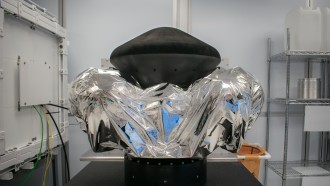Illicit wildlife trade is often linked to species collection and the demand for rare materials used for decorative purposes such as the elephant's ivory, but Roger Byard, a pathologist from the University of Adelaide in Australia, says that traditional Chinese medicine is also a significant driver in the illegal trade.
Byard said that traces of endangered animals have been found in traditional Chinese medicines. It was even found that Jian Bu Qiang Shen Wan, an herbal medicine marketed for arthritis, contains DNA from snow leopard. The said animal is listed in the Convention on the International Trade in Endangered Species.
The snow leopard's DNA was accidentally identified during a toxicology study aimed at finding substitutions used in Chinese medicines. The researchers also found traces of dogs, rats and cats in the samples, albeit there is the possibility that these ingredients were there as a result of domestic animal contamination.
Byard, however, thinks that the presence of snow leopard DNA in the medicine was not an accident. With less than 7,000 remaining in the wild, and as few as 2,500 believed to be breeding, the animal is so rare that it had to be deliberately added.
"While inadvertent contamination with animal DNA is the most plausible explanation for the detection of dog, cow, goat, sheep, cat, and rat in traditional preparations, it seems unlikely that an animal as rare as a snow leopard would be included accidentally," Byard said. "The same would apply to pit vipers and frogs which are most likely to have been deliberately added as a primary ingredient."
There is no evidence that the snow leopard has any effect on arthritis. Even though the effectiveness of many animal products as treatment for diseases is not yet established, animal parts believed to cure diseases sell at exorbitant price. The rhinoceros horn, which is believed to cure AIDS and cerebral hemorrhage, for instance, sells up to $50,000 per kilogram.
Byard has called for more control in the use of animals in traditional medicine as demand for this alternative treatment poses threats to a number of endangered and threatened species. About half of the reptiles used in traditional medicines, for instance, are threatened or endangered species.
Photo: Kevin Case | Flickr









